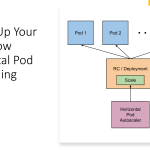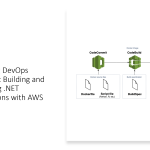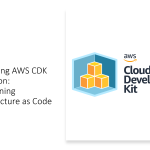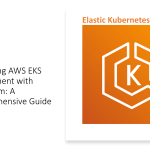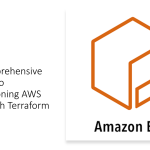GitOps is a relatively new approach to software delivery that has been gaining popularity in recent years. It is a set of practices for managing and deploying infrastructure and applications using Git as the single source of truth. In this blog post, we will explore the concept of GitOps, its key benefits, and some examples of how it is being used in the industry.
What is GitOps?
GitOps is a modern approach to software delivery that is based on the principles of Git and DevOps. It is a way of managing infrastructure and application deployments using Git as the single source of truth. The idea behind GitOps is to use Git to store the desired state of the infrastructure and applications, and then use automated tools to ensure that the actual state of the system matches the desired state.
The key benefit of GitOps is that it provides a simple, repeatable, and auditable way to manage infrastructure and application deployments. By using Git as the source of truth, teams can easily manage changes to the system and roll back to previous versions if needed. GitOps also provides a way to enforce compliance and security policies, as all changes to the system are tracked in Git.
How does GitOps work?
GitOps works by using Git as the single source of truth for managing infrastructure and application deployments. The desired state of the system is defined in a Git repository, and then automated tools are used to ensure that the actual state of the system matches the desired state.
The Git repository contains all of the configuration files and scripts needed to define the system. This includes everything from Kubernetes manifests to database schema changes. The Git repository also contains a set of policies and rules that define how changes to the system should be made.
Automated tools are then used to monitor the Git repository and ensure that the actual state of the system matches the desired state. This is done by continuously polling the Git repository and comparing the actual state of the system to the desired state. If there are any differences, the automated tools will take the necessary actions to bring the system back into compliance with the desired state.
With GitOps, infrastructure and application deployments are automated and triggered by changes to the Git repository. This approach enables teams to implement Continuous Delivery for their infrastructure and applications, allowing them to deploy changes faster and more frequently while maintaining stability.
GitOps relies on a few key principles to make infrastructure and application management more streamlined and efficient. These include:
- Declarative Configuration: GitOps uses declarative configuration to define infrastructure and application states. This means that rather than writing scripts to configure infrastructure or applications, teams define the desired end state and let GitOps tools handle the rest.
- Automation: With GitOps, deployments are fully automated and triggered by changes to the Git repository. This ensures that infrastructure and application states are always up to date and consistent across environments.
- Version Control: GitOps relies on version control to ensure that all changes to infrastructure and application configurations are tracked and documented. This allows teams to easily roll back to previous versions of the configuration in case of issues or errors.
- Observability: GitOps tools provide visibility into the state of infrastructure and applications, making it easy to identify issues and troubleshoot problems.
Key benefits of GitOps
GitOps offers several key benefits for managing infrastructure and application deployments:
- Consistency: By using Git as the source of truth, teams can ensure that all changes to the system are tracked and auditable. This helps to enforce consistency across the system and reduces the risk of configuration drift.
- Collaboration: GitOps encourages collaboration across teams by providing a single source of truth for the system. This helps to reduce silos and improve communication between teams.
- Speed: GitOps enables teams to deploy changes to the system quickly and easily. By using automated tools to manage the deployment process, teams can reduce the time and effort required to make changes to the system.
- Scalability: GitOps is highly scalable and can be used to manage large, complex systems. By using Git as the source of truth, teams can easily manage changes to the system and roll back to previous versions if needed.
Comparison between GitOps and Traditional Infrastructure Management:
- Deployment Speed: Traditional infrastructure management requires a lot of manual effort, which can result in delays and mistakes. With GitOps, the entire deployment process is automated, which significantly speeds up the deployment process.
- Consistency: In traditional infrastructure management, it’s easy to make mistakes or miss steps in the deployment process, leading to inconsistent deployments. GitOps, on the other hand, ensures that deployments are consistent and adhere to the same process, thanks to the version control system.
- Scalability: Traditional infrastructure management can be challenging to scale due to the manual effort required. GitOps enables scaling by automating the entire deployment process, ensuring that all deployments adhere to the same process and standard.
- Collaboration: In traditional infrastructure management, collaboration can be a challenge, especially when multiple teams are involved. With GitOps, collaboration is made easier since everything is version-controlled, making it easy to track changes and collaborate across teams.
- Security: Traditional infrastructure management can be prone to security vulnerabilities since it’s often difficult to track changes and ensure that all systems are up-to-date. GitOps improves security by ensuring that everything is version-controlled, making it easier to track changes and identify security issues.
Examples of GitOps in Action
Here are some examples of GitOps in action:
- Kubernetes: GitOps is widely used in Kubernetes environments, where a Git repository is used to store the configuration files for Kubernetes resources. Whenever a change is made to the repository, it triggers a deployment of the updated resources to the Kubernetes cluster.
- CloudFormation: In Amazon Web Services (AWS), CloudFormation is used to manage infrastructure as code. GitOps can be used to manage CloudFormation templates stored in a Git repository, enabling developers to manage infrastructure using GitOps principles.
- Terraform: Terraform is an open-source infrastructure as code tool that is widely used in the cloud-native ecosystem. GitOps can be used to manage Terraform code, allowing teams to manage infrastructure in a more repeatable and auditable manner.
- Helm: Helm is a package manager for Kubernetes, and it is commonly used to manage complex applications in Kubernetes. GitOps can be used to manage Helm charts, enabling teams to deploy and manage applications using GitOps principles.
- Serverless: GitOps can also be used to manage serverless environments, where a Git repository is used to store configuration files for serverless functions. Whenever a change is made to the repository, it triggers a deployment of the updated functions to the serverless environment.
Real-world Examples of GitOps in Action
GitOps has become increasingly popular in various industries, from finance to healthcare to e-commerce. Here are some examples of companies that have adopted GitOps and how they are using it:
Weaveworks
Weaveworks, a provider of Kubernetes tools and services, uses GitOps to manage its own infrastructure and help customers manage theirs. By using GitOps, Weaveworks has been able to implement Continuous Delivery for its infrastructure, allowing the company to make changes quickly and easily while maintaining stability.
Weaveworks also uses GitOps to manage its customers’ infrastructure, providing a more efficient and reliable way to deploy and manage Kubernetes clusters. This approach has helped Weaveworks to reduce the time and effort required to manage infrastructure for its customers, allowing them to focus on developing and delivering their applications.
Zalando
Zalando, a leading European e-commerce company, has implemented GitOps as part of its platform engineering approach. With GitOps, Zalando has been able to standardize its infrastructure and application management processes, making it easier to deploy changes and maintain consistency across environments.
Zalando uses GitOps to manage its Kubernetes clusters and other infrastructure components, allowing teams to quickly and easily deploy changes without disrupting other parts of the system. By using GitOps, Zalando has been able to reduce the risk of downtime and ensure that its systems are always up to date and secure.
Autodesk
Autodesk, a software company that specializes in design software for architects, engineers, and construction professionals, has implemented GitOps as part of its infrastructure management strategy. By using GitOps, Autodesk has been able to automate its infrastructure deployments and reduce the time and effort required to manage its systems.
Autodesk uses GitOps to manage its Kubernetes clusters, ensuring that all deployments are consistent and up to date. The company has implemented Argo CD, a popular GitOps tool, to manage its infrastructure. With Argo CD, Autodesk has been able to automate its deployments and ensure that all changes to its infrastructure are tracked and audited.
By implementing GitOps, Autodesk has seen significant benefits in terms of infrastructure management. The company has been able to reduce the time and effort required to manage its systems, while also improving the consistency and reliability of its deployments. This has allowed Autodesk to focus more on its core business of developing and improving its design software.
Booking.com
Booking.com, one of the world’s largest online travel companies, has also embraced GitOps as part of its infrastructure management strategy. The company uses GitOps to manage its Kubernetes clusters, ensuring that all deployments are automated and consistent across its infrastructure.
Booking.com uses Flux, a popular GitOps tool, to manage its infrastructure. With Flux, the company has been able to automate its deployments, reducing the risk of human error and ensuring that all changes to its infrastructure are tracked and audited.
By using GitOps, Booking.com has seen significant benefits in terms of infrastructure management. The company has been able to reduce the time and effort required to manage its systems, while also improving the reliability and consistency of its deployments. This has allowed Booking.com to focus more on developing new features and improving its online travel platform.
Here are some more industry examples of companies utilizing GitOps:
- SoundCloud – SoundCloud, the popular music streaming platform, has implemented GitOps to manage their infrastructure as code. They use a combination of Kubernetes and GitLab to automate their deployments and make it easy for their developers to spin up new environments.
- SAP – SAP, the software giant, has also embraced GitOps. They use the approach to manage their cloud infrastructure, ensuring that all changes are tracked and can be easily reverted if necessary. They have also developed their own GitOps tool called “Kyma” which provides a platform for developers to easily create cloud-native applications.
- Alibaba Cloud – Alibaba Cloud, the cloud computing arm of the Alibaba Group, has implemented GitOps as part of their DevOps practices. They use a combination of GitLab and Kubernetes to manage their cloud infrastructure, allowing them to rapidly deploy new services and ensure that they are always up-to-date.
- Ticketmaster – Ticketmaster, the global ticket sales and distribution company, uses GitOps to manage their cloud infrastructure across multiple regions. They have implemented a GitOps workflow using Kubernetes and Jenkins, which allows them to easily deploy new services and ensure that their infrastructure is always up-to-date and secure.
These examples show that GitOps is not just a theoretical concept, but a real-world approach that is being embraced by some of the world’s largest companies. By using GitOps, organizations can streamline their development processes, reduce errors and downtime, and improve their overall security posture.
Conclusion
GitOps has revolutionized the way software engineering is done. By using Git as the single source of truth for infrastructure management, organizations can automate their deployments and reduce the time and effort required to manage their systems. With GitOps, developers can focus more on developing new features and improving their software, while operations teams can focus on ensuring that the infrastructure is reliable, secure, and up-to-date.
In this blog post, we have explored what GitOps is and how it works, as well as some key examples of GitOps in action. We have seen how GitOps is being used by companies like Autodesk and Booking.com to automate their infrastructure deployments and reduce the time and effort required to manage their systems.
If you are interested in learning more about GitOps, there are many resources available online, including tutorials, blog posts, and videos. By embracing GitOps, organizations can streamline their infrastructure management and focus more on delivering value to their customers.”
Key Takeaways
- GitOps is a methodology that applies the principles of Git to infrastructure management and application delivery.
- GitOps enables developers to focus on delivering applications, while operations teams focus on managing infrastructure.
- GitOps promotes automation, observability, repeatability, and increased security in the software development lifecycle.
- GitOps encourages collaboration between teams, reducing silos and increasing communication.
- GitOps provides benefits such as increased reliability, faster time to market, reduced downtime, and improved scalability.
